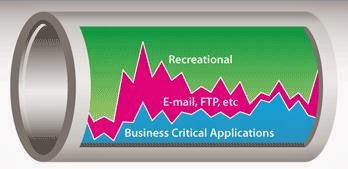- Let’s say you have Time sensitive data like Credit card gateway servers, which should be given more priority as compared to internal production environment. Production traffic should be given more priority than your development traffic. This can be achieved by traffic shaping by limiting the traffic for development and production environment as compared to the network of credit card gateway servers.
- If your are the ISP provider, then you may need to shape the traffic on your customer based on bandwidth plan or based on the support contract they have with your company.
I hope you have understood about the necessity of traffic shaping. In this post, I am going to explain about the VMware’s Traffic shaping policies. Which can be configured at standard switch, Standard Port Group, Distributed PortGroup and Distributed port.The main difference between the traffic shaping policy on Standard Switch and Distributed switch is ESX/ESXi host shapes outbound traffic traffic on Standard switches whereas both Incoming and outgoing traffic shaping can be achieved using vSphere distributed switches.
Standard Switch = Outgoing Traffic Shaping (Egress Traffic Shaping)
Distributed Switch = Incoming + Outgoing Traffic shaping (Ingress + Egress Traffic Shaping)
Average Bandwidth:
This will be specified in Kbit/s. This option controls the number of bits per second to allow across a port,averaged over time. Specified value is the allowed average load on the PortGroup.
Peak Bandwidth:
This will be specified in Kbit/s. This option controls the maximum number of bits per second to allow across a portGroup .Value Specified in the peak bandwidth option is maximum value in Kbit/s that portGroup can handle. Peak bandwidth should never be smaller than the average bandwidth.
Burst Size:
This will be specified in KB. This is Maximum number of bytes to allow in a burst. Let’s say, If you have configured Burst size parameter, Port Group might gain the burst bonus if it is not at all using all its allocated bandwidth on the port Group. During Peak time, When the same port group needs more bandwidth than value specified in the Average bandwidth. It will be allowed temporarily to transmit data at higher speed if port group has burst bonus. It is nothing but the factor which defines how long the bandwidth can exceed the average.
Excellent Diagram from LucD explaining the Traffic Shaping policies.
I believe This is informative for you. Thanks for Reading !!!. Be Social and Share it in social media if you feel worth sharing it.
